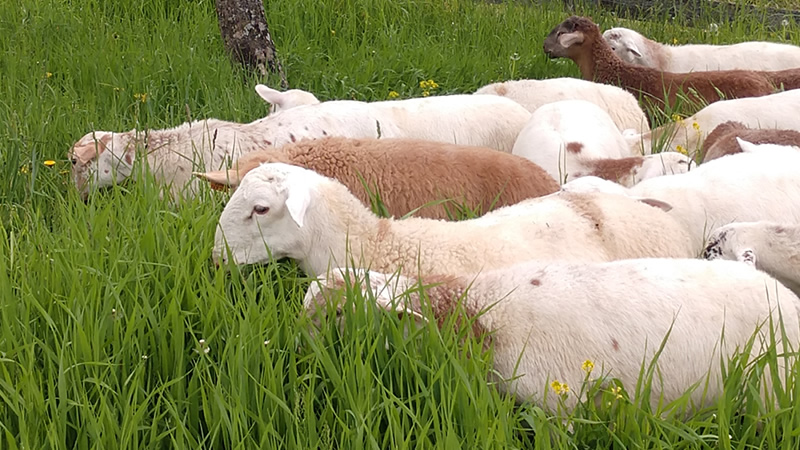Management Systems
Conventional Management

Most flocks in the northeast, even those that most would consider pasture-based, feed some form of whole grain or pelleted concentrate at some point in the annual production cycle. We are no different. Our “Conventional” ewes are supplemented with grain during lactation and our lambs too for a few weeks before going to pasture in May. For the remainder of the year, however, all sheep are maintained on pasture with no supplement. With our conventionally-raised sheep, we are striving for maximizing pounds of lamb weaned per ewe which favors ewes that successfully raise twins and triplets. Demands for nursing triplets are obviously quite high, so we supplement to be sure each lamb receives sufficient nutrition from its mother. Because a lamb’s feed efficiency is so great in the first month or so of life, we offer high quality grains to lambs too, but separate from their mothers (i.e. creep feeding) which builds an outstanding, healthy lamb. With this strong nutritional foundation, our lambs transition well to a grass and legume diet on pasture by late spring and are ready for market by early fall. Inputs are higher in this system, but output is higher as well.
All-Forage Management

There is a growing interest in raising and marketing grass-fed meat in the northeast region. Marketing grass-fed lamb works well with diversified organic producers looking for low input livestock, especially if there is a strong market nearby. Katahdins, in general, are well-suited to low-input management and a breed of choice for many grass-fed producers. But, our experience tells us that not all Katahdin ewes are particularly well-suited to raising quality lambs on forage alone. We have a select group of ewes that we believe have the necessary traits to raise their lambs exclusively on pasture. We call this management “All-Forage” because in the winter these ewes are housed indoors and are provided high quality hay, then switching to haylage in early spring before turn out to pasture just before lambing. These ewes deliver their lambs on pasture, so that their lactation coincides with the abundance of new green growth. We select for superior milk production as the lambs are offered no creep feed to supplement their growth. These sheep are the definition of functional sheep; lambing outdoors, genetically resistant to parasites and doing it all successfully on an all-forage diet.
